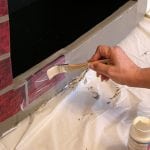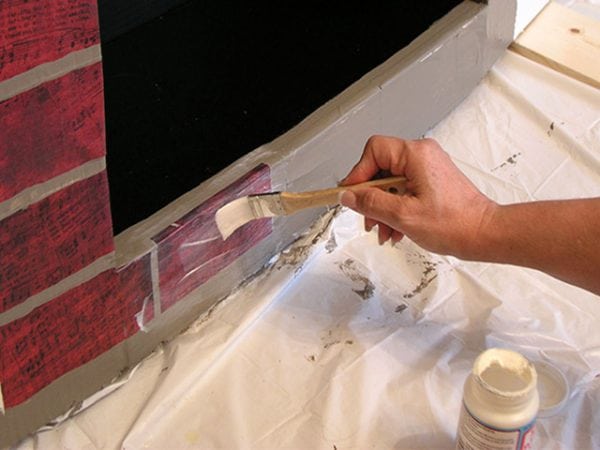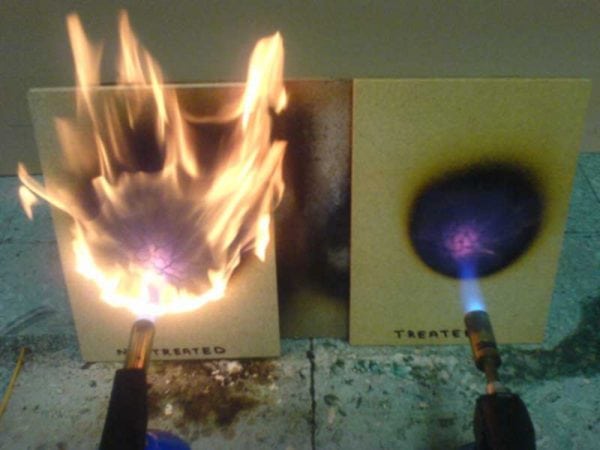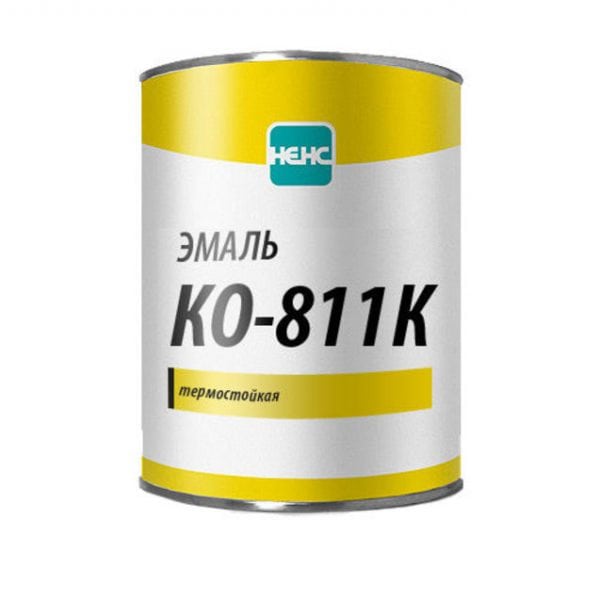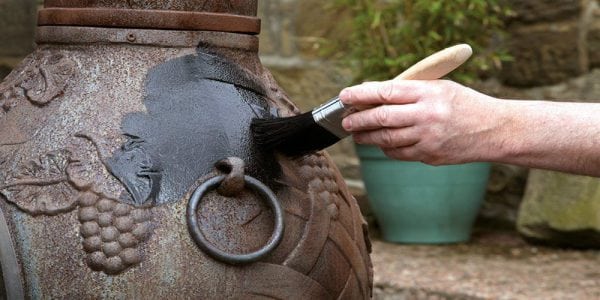During the repair, careful attention must be paid to each stage. One of the most important is painting. Problems arise when it is necessary to paint heating appliances or, for example, a stove. The use of conventional dyes can lead to undesirable consequences: the appearance of extraneous odors and a change in color. Heat resistant paint will help protect against them. What is she like?
Heat-resistant paint differs from other dyes in its composition. In most cases, ordinary paints consist of two elements - a coloring pigment and a base. As a basis, oil or nitro paint is most often used. They contain acetone or drying oil, due to which an unpleasant odor appears. This is especially true when the painted surface heats up under the influence of high temperatures. Along with the smell, the color may change.
Heat-resistant paint has excellent anti-corrosion properties. It protects the surface from rust and destruction. The main scope of its use is the coloring of heating appliances and some elements. These include:
- fireplaces;
- ovens;
- radiators;
- transformers;
- chimney pipes;
- engines
- doors in furnaces;
- barbecues.
Right choice
The market of paints and varnishes presents a fairly large assortment of paints that can withstand high temperatures and at the same time protect the surface from rust, adverse environmental effects, etc. In order not to make a mistake in choosing, you must remember the signs that high-quality paint should differ:
- Filler. If it is a heat-resistant paint that can withstand temperatures of even more than 500 ° C, zinc and aluminum powder should be present in its composition.
- Temperature limit Most paints can withstand around 450 ° C. However, for furnace painting they do not fit. In this case, the ideal option is heat-resistant enamel. The coating created with it can withstand more than 600 ° C.
- The foundation. It is desirable that the paint be made on the basis of a solvent or water. Then it will not emit toxic substances when heated. In addition, such a base will allow the finished coating to maintain its properties even at very high temperatures.
- Corrosion resistant properties. For surfaces that are located in rooms with high humidity, it is better to choose anti-corrosion dyes. They will also protect from rust, and they will withstand temperature extremes.
Many heat-resistant paints are considered universal. They can be used to paint any surface, such as glass. The resulting coating will reliably protect against rust and destruction, preventing the penetration of air and moisture.
to contents ↑
Classification
There are several types of heat-resistant paints. From each other they differ in composition:
- One and two component polyurethane. They make the surface glossy, dry quickly and are suitable for a wide variety of furnaces.
- SiliconeThis is the best choice for rooms with sudden changes in temperature. After staining, the surface acquires a silver tint.
- Alkyd organosilicon enamels. Suitable for processing stone, brick, metal and other materials. Easily cope with aggressive environmental influences.
- Water-based acrylic. The coating protects the metal from rust. This type of paint is not suitable for rooms with high humidity - such conditions greatly reduce its life.
- Latex water emulsion. Brick and concrete stoves are painted with such dyes. The finished coating has excellent water repellent properties.
- Enamel primer. Effectively and permanently protects any surface from corrosion, rust and high temperatures. It dries quickly. Primer enamel is suitable for rooms with high humidity and aggressive environment.
Also, heat-resistant paints differ in their purpose:
- For industrial plants in which temperatures can rise to 700 ° C and above. In the composition of such a paint must necessarily be silicone resins.
- For residential premises. Here, the temperature of painted surfaces never rises above 100 ° C, so it is better to use materials based on resins, such as acrylic.
- For surfaces with temperatures from 400 to 750 ° C. These products are most often available in spray cans.
- Dyes that contain epoxy resins are suitable for rooms with a temperature of 100-120 ° C.
Marking system
There is always a mark on the paint packaging. Usually it consists of letters and numbers. If it says KO, it means that the product contains an organosilicon binder. The next digit or number following the letters indicates the degree of heat resistance. Here are some examples of labeling:
- KO-811. A dye that is suitable for steel and aluminum products. It can be used even when the temperature is below freezing.
- KO-8111. Such paint can be used to paint objects that will not be heated by more than 600 ° C. Such a primer-enamel perfectly protects against rust and aggressive environment.
- KO-814. Cured temperature ranges from –60 to + 400 ° C.
- KO-813. Heat-resistant enamel withstanding temperature changes from 60 to 600 ° C. The coating reliably protects against rust. It is not affected by high humidity and the harmful effects of the environment.
Color schemes
The most sought after colors are black and silver. And this is not surprising, because a surface painted black will heat up much faster than others. Black paint is suitable for processing furnaces. It is better that it is matte - the matte surface has good heat dissipation.
For coloring the fireplace, you can use any color dye, since it will play an exclusively decorative role. Red glossy enamel will look great.
What can be said regarding silver paint or silverfish? It is quite widespread and is used for coloring heating appliances, stoves, pipes, etc. Silverfish has been used for several centuries. The secret of its popularity in a large number of advantages:
- creates a strong coating;
- resistant to rust;
- does not contain toxic substances;
- silverfish dries quickly;
- the painted surface acquires a beautiful silver color.
Chameleons
A special place is occupied by heat-sensitive paints. This is a coloring matter, the color of which varies with temperature. Thermosensitive paints allow the eye to determine to what extent a particular surface is heated.
Heat-resistant paints have many advantages. Firstly, they can be used when working with different surfaces, including glass, brick, concrete, etc.Secondly, they protect against rust and destruction. And, finally, they give the surface a beautiful glossy shine or a solid matte finish.

